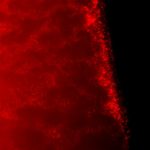Lien vers Pubmed [PMID] – 10233052
Biophys. J. 1999 May;76(5):2329-45
Abstract A refined prediction of the nicotinic acetylcholine receptor (nAChR) subunits’ secondary structure was computed with third-generation algorithms. The four selected programs, PHD, Predator, DSC, and NNSSP, based on different prediction approaches, were applied to each sequence of an alignment of nAChR and 5-HT3 receptor subunits, as well as a larger alignment with related subunit sequences from glycine and GABA receptors. A consensus prediction was computed for the nAChR subunits through a “winner takes all” method. By integrating the probabilities obtained with PHD, DSC, and NNSSP, this prediction was filtered in order to eliminate the singletons and to more precisely establish the structure limits (only 4% of the residues were modified). The final consensus secondary structure includes nine alpha-helices (24.2% of the residues, with an average length of 13.9 residues) and 17 beta-strands (22.5% of the residues, with an average length of 6.6 residues). The large extracellular domain is predicted to be mainly composed of beta-strands, with only two helices at the amino-terminal end. The transmembrane segments are predicted to be in a mixed alpha/beta topology (with a predominance of alpha-helices), with no known equivalent in the current protein database. The cytoplasmic domain is predicted to consist of two well-conserved amphipathic helices joined together by an unfolded stretch of variable length and sequence. In general, the segments predicted to occur in a periodic structure correspond to the more conserved regions, as defined by an analysis of sequence conservation per position performed on 152 superfamily members. The solvent accessibility of each residue was predicted from the multiple alignments with PHDacc. Each segment with more than three exposed residues was assumed to be external to the core protein. Overall, these data constitute an envelope of structural constraints. In a subsequent step, experimental data relative to the extracellular portion of the complete receptor were incorporated into the model. This led to a proposed two-dimensional representation of the secondary structure in which the peptide chain of the extracellular domain winds alternatively between the two interfaces of the subunit. Although this representation is not a tertiary structure and does not lead to predictions of specific beta-beta interaction, it should provide a basic framework for further mutagenesis investigations and for fold recognition (threading) searches.

